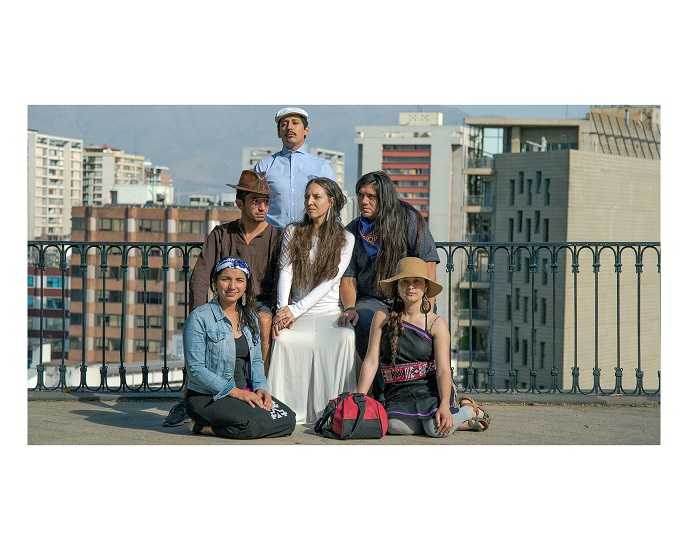Uncovering the invisible city of Santiago de Chile’s Mapuche indigenous inhabitants
What is now called the Mapuche diaspora by indigenous scholars is a critical consequence of the loss of land and displacement of the indigenous Mapuche at the end of the 19th century. The recently born Chilean Republic occupied the previously independent Mapuche territory at that time. This resulted in massive rural to urban migration where Mapuche populations moved into poorer neighbourhoods of cities such as Temuco and Santiago. Here, indigenous people made up the broader underclass. Recently, a new term has emerged to identify the indigenous experience of the city, underlining both marginality and endurance: Mapurbe. Coined by Mapuche poet David Añinir, it combines mapu (earth) and urbe (city).
Seeing the city through the eyes of indigenous artists
The MAPS-URBE(opens in new window) project researched the impact of displacement and social exclusion on indigenous youth and identified a set of mutually negotiated research aims alongside young Mapuche. They developed a series of collaborative and participatory methods, including mapping, video, performance, and exhibition. “This offers a better understanding of indigenous urban experiences as a kind of ‘in betweenness’ – as expressed by the term Mapurbe. It is used to symbolise the ongoing negotiation of displacement from the ancestral territory and new forms of dwelling in the city,” explains project fellow Olivia Casagrande. Undertaken with the support of the Marie Skłodowska-Curie Actions programme, this research enhances our knowledge of how young Mapuche living in Santiago de Chile experience urban space. By working with a group of indigenous artists and activists, the research team addressed how indigenous time and space are elaborated within the urban context to highlight how the personal and collective past is reworked.
Making the invisible visible
MAPS-URBE brought together anthropology, performance and critical cartography to analyse and understand the urban landscape in its socio-spatial, material and political dimensions. Including the perspectives of an anthropologist, indigenous activists, artists and scholars, this process generated knowledge that would be less likely to emerge from any other kind of methodological approach. The multimodality of the research makes it a multilayered composition of voices and materials that can be viewed on the www.mapsurbe.com/copia-di-esp-santiago-waria (project website). They will also feature in a forthcoming collaborative book, currently under contract with Manchester University Press. Project work concluded with an artistic event co-produced by the research participants. The exhibition and performance were successful in involving the Mapuche community and the general public. They also generated an important space for debate and visibility for the Mapuche, and thus succeeded in the ‘transcultural communication’ envisioned in the research proposal.
Generating awareness on multicultural urban settings and socioeconomic inequalities
Finally, by contributing to establishing interdisciplinary links between anthropology, geography, urbanism and artistic disciplines, the project’s approach increased knowledge about Latin American cities. It also opens up a space for future comparative research with other multicultural urban contexts such as European cities. “This research is of key importance in times when physical and social spaces in cities play a pivotal role globally, and in which it is urgent to collaboratively engage with issues such as migration and belonging, diasporic identities, processes of racialisation and socioeconomical inequalities,” concludes Casagrande.







